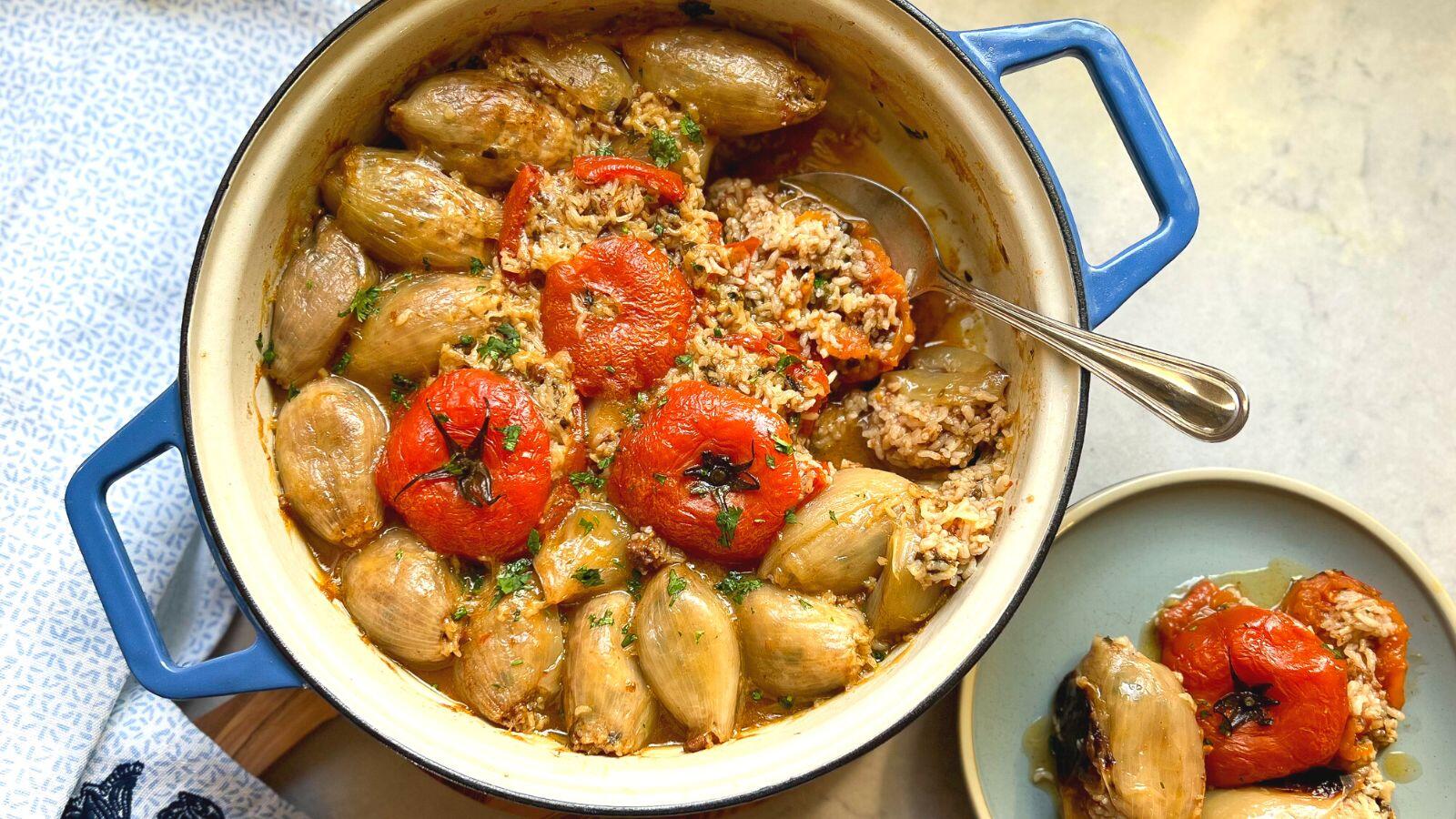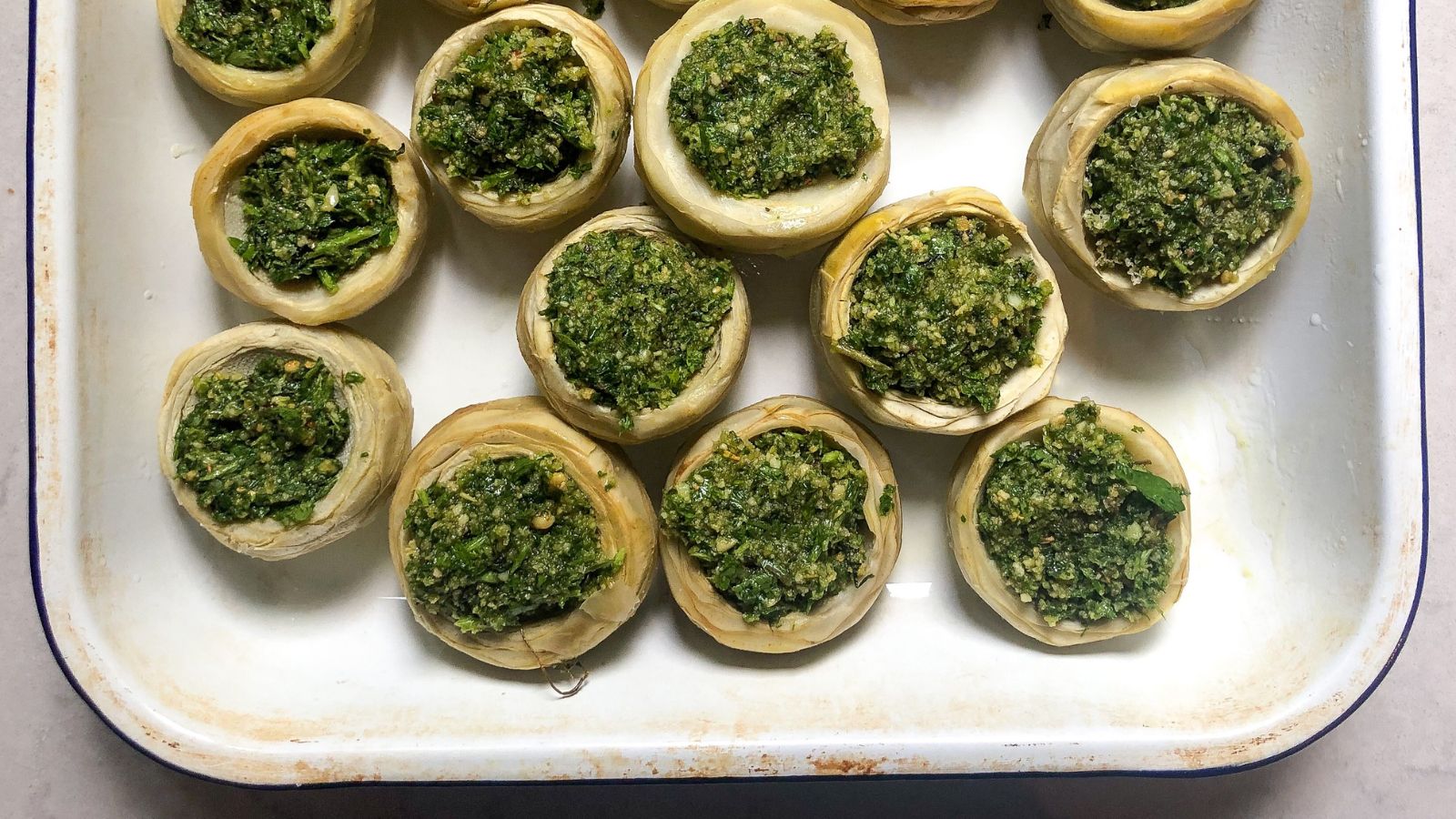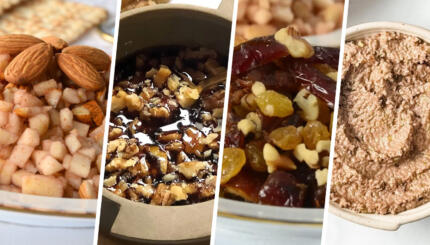My grandmother Rachel was a gifted cook. After moving as a young mother from Baghdad to Tel Aviv in 1943, she kept on cooking the same dishes she grew up with in Iraq. From her small kitchen, out came fried eggplant slices, ground chicken and parsley meatballs, rice with vermicelli that she cooked in freshly made chicken broth and chopped spicy vegetable salad with tons of black pepper.
But the highlight was her assortment of stuffed foods that the Iraqi, and wider Middle Eastern, cuisine is famous for: sambousek pastries with chickpea filling; kubbeh (farina dumplings) stuffed with meat in okra, pumpkin or beet sauce depending on the season; stuffed chicken with rice (t’beet) for Shabbat; cookies stuffed with dates (baba b’tamar) and sweet sambousek with sugar and nuts.
My absolute favorites were the stuffed vegetables, particularly stuffed onions and tomatoes, and especially when they got a little burnt at the bottom, releasing their sugars that caramelized their skin. My grandmother’s stuffing was made of rice and a little ground beef, and had a slight lemony taste, which, with the natural sweetness of the onions and tomatoes, made the dish sublime. I used to dig with a spoon deep into the pot to find the most caramelized stuffed onion in the batch.

Stuffed vegetables are a cornerstone of Iraqi cuisine, dating back to 13th-century Baghdad. “The Book of Dishes” (“Kitab al Tabikh”) by Al Baghdadi includes a recipe for madfuna, which means “buried,” and is also the root of the name of North African Shabbat overnight stew known as tfina or adafina. Al Baghdadi describes how to pound cooked meat, mix with chickpeas and then stuff eggplants with the mixture. He spices the dish with saffron, coriander and cinnamon, sprinkles with rose water and cooks on a “gentle fire.”
The Nosher celebrates the traditions and recipes that have brought Jews together for centuries. Donate today to keep The Nosher's stories and recipes accessible to all.
Stuffed food, whether it’s a stuffed dumpling or pastry, leaf or vegetable, requires a lot of practice, patience and time — things my grandmother never questioned when she’d lovingly roll kubbeh, stuff sambousek or separated onion layers to fill and roll. She started her day early in the morning by cooking her own chicken broth that she later used in the stuffed vegetable and the kubbeh sauce. To make the stuffed onions, she first cooked then separated the onions into layers so she could fill each layer separately. From time to time she sat at a chair near the large window, letting her feed rest, looking outside, feeding Tel Avivian cats with some scraps, before she went back to roll kubbeh and stuff onions.
And she’s not the only one. Grandmothers from around the Jewish world have been stuffing vegetables for generations. More specifically, at least since the Ottomans started spreading the technique of making dolma, a general name for stuffed vegetables and leaves, throughout the empire, making it a popular practice that’s open to creative interpretation.
“There’s seven different ways
to cook an eggplant…
The second one to make it
is the wife of the Shammash
she hollows it and fills it
with herbs, and lots of rice
they call this meal:
a dish of dolma.”
– “Seven Ways To Cook An Eggplant” (“Los Guisados De La Berenjena”), a Ladino folk song.
Over the years, inspired by friends and colleagues in Israel, I’ve added to the vegetable-stuffing techniques and recipes my grandmother taught me. Driven by a desire to keep her beautiful culinary traditions alive, I prepare stuffed vegetables regularly. I find the slow and repetitive labor of stuffing relaxing, and delight that the final flavor is somehow greater than the sum of its parts.
In fact, whenever I walk through a farmers market or supermarket vegetable aisle, I find myself drawn to veggies that I can stuff in various ways: Eggplants stuffed Sephardi-style, with a mixture of ground meat, rice and herbs, or rainbow chard for a colorful pot of mashi — the Arabic term for stuffed vegetables used by Jews from the Middle East.
While these dishes invite creativity when it comes to flavors, there are some “rules” when it comes to the cooking method. So here are six of my best veggie-stuffing tips:
- Choose firm vegetables of about the same size. If you’re mixing a variety of vegetables, try to keep them all of the same firmness. For example, potatoes and beets need more time to cook than zucchini and tomatoes. Onion layers are adjustable in that sense, and can be cooked for a longer or shorter time.
- Melon ballers, serrated grapefruit spoons and apple corers are all helpful in emptying veggies, especially zucchini and root vegetables.
- Soak the rice in cold water for at least one hour before mixing the stuffing, to make sure it is moist enough and will not dry during the cooking process.
- Ground beef, chicken or lamb add good flavor to the stuffing, but that’s all you need meat for: a bit of flavor. So there’s no need to add too much of it, ¼ lb ground beef mixed with 2 cups of rice is more than enough. Vegan meat substitutes work very well, too.
- Have patience and cook your stuffed vegetables slowly over 1½-2 hours. After that, especially if the filling includes rice, let the dish stand covered for at least another 30 minutes before serving. The rice will absorb all the steam and will have the best texture this way. (This is true for any cooked rice dish.)
- Never overstuff vegetables and leaves with rice! The rice expands as it cooks and will rip the vegetables if they’re filled too much.



